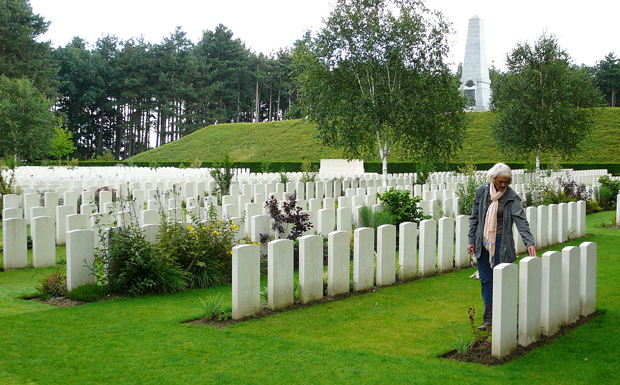
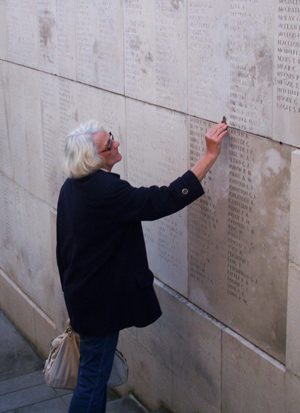
March 28, 2014
by Liz Caffery
South Burnett residents will soon have an opportunity to honour family members who died during World War I in the fields of Flanders.
In May, a delegation from the South Burnett will visit three memorial sites in Belgium to acknowledge the sacrifice of some of the fallen from the South Burnett and place a poppy in their memory.
This will be part of the deputation’s visit to honour Patrick Tiernan, the Murgon airman shot down in his Halifax bomber on June 17, 1944, near Dodewaard in the Netherlands.
On May 1, just prior to the Tiernan Memorial Day in Dodewaard, the group intends to travel to Belgium and pay their respects at the Menin Gate at Ypres, the Buttes New British cemetery at Polygon Wood and the Tyne Cot Cemetery and Memorial (see descriptions below).
These three well-known memorials honour servicemen who lost their lives in combat on the Western Front during World War I.
Some of the fiercest battles of the war – with an appalling loss of life – occurred in the area around the Ypres Salient, Polygon Wood and Passchendaele, known as the Flanders Fields.
There are 55,000 names inscribed on the Menin Gate at Ypres of soldiers from the British Commonwealth who lost their lives in Belgium and who have no known grave. More than 6000 of these names belong to Australians.
An additional 35,000 names from United Kingdom and New Zealand units are inscribed at Tyne Cot which also has a cemetery with almost 12,000 graves of Commonwealth servicemen, including 8369 unidentified burials.
There are also 2000 Commonwealth servicemen buried or commemorated in the Buttes New British Cemetery, less than 400 of them are identified.
* * *
War monuments in towns throughout the South Burnett reveal the tragic loss of life of young men from small South Burnett communities during World War I.
Some of their names appear on the Menin Gate, others are buried in the various war cemeteries throughout the Western Front in France and Belgium.
A remarkable story in recent years concerns the discovery of the body of John (Jack) Hunter from Nanango in 2006.
He died in 1917 during the horrific fighting at Polygon Wood. His remains were identified through DNA and on Remembrance Day 2007, 90 years after he was killed, Jack was reinterred at Buttes New British Cemetery in Polygon Wood.
* * *
The South Burnett Regional Council is inviting local residents to provide the names of family members inscribed on the Menin Gate or who are buried at Tyne Cot or the Buttes cemetery at Polygon Wood.
Members of the Dodewaard delegation will place a poppy on behalf of the family and record the moment with a photograph which will be passed on to the family after the group returns.
However, it has been requested that the details of the location of the names or graves are researched and accurate information supplied.
Supplying the battalion number and rank would also be helpful. Without these details, it may be impossible to locate the name or the grave.
A useful research website is the Commonwealth War Graves Commission or search the Roll of Honour on the Australian War Memorial website
An example of the information the delegation requires: “Wesley Buttsworth. Brooklands. Private. 17th Battalion. Died 9 October 1917. Name inscribed on the Menin Gate Memorial, Ypres. Panel 7- 17-23-25-27-29-31”
For more information and to provide names, contact Julie Foley at the South Burnett Regional Council on (07) 4189-9543 or by email
Names must be supplied to council by April 21.
Related articles:
- Councillors To Honour Murgon War Hero
- School Captains Going To Holland
- Murgon’s War Hero To Be Honoured
- Meet Murgon’s War Hero
- Murgon Hero Remembered

* * *
Why a Red Poppy?
Red poppies which bloomed in the trenches and on the graves of soldiers in Flanders, and continue to flower to this day in the fields of Flanders, have become a symbol of remembrance.
The poppy was immortalised in John McCrae’s poem “In Flanders’ Fields”, one of the most memorable war poems written. It is a lasting legacy of the terrible battle in the Ypres salient in the spring of 1915:
In Flanders’ Fields the poppies blow
Between the crosses, row on row,
That mark our place; and in the sky
The larks, still bravely singing, fly
Scarce heard amid the guns below.
We are the dead. Short days ago
We lived, felt dawn, saw sunset glow,
Loved, and were loved, and now we lie
In Flanders’ Fields.
Take up our quarrel with the foe:
To you from failing hands we throw
The torch; be yours to hold it high.
If ye break faith with us who die
We shall not sleep, though poppies grow
In Flanders’ Fields.
The little red poppies that will be placed on graves in war cemeteries or beside names on war memorials of soldiers from South Burnett families are exact replicas in size and colour of the poppies that bloom in Flanders Fields.
* * *
The Menin Gate
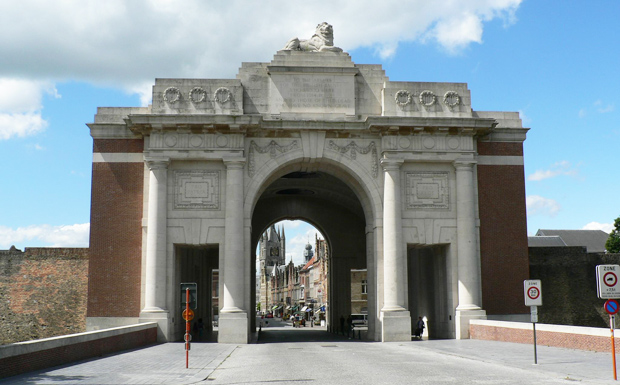
Tens of thousands of British and Empire troops remain missing in France and Belgium.
Some lie in nameless graves while the remains of others have never been found.
The Menin Gate at Ypres records the names of 55,000 of the missing in Belgium and a similar number are recorded elsewhere; there are 35,000 names on the Tyne Cot memorial.
The Menin Gate was so named because here the road out of Ypres passed through the old wall defences going in the direction of Menin. During the war the two stone lions standing on each side of the Menin Gate were seen by tens of thousands of troops as they went towards the front line. The gate, beyond which these men’s fate lay, became highly symbolic.
Afterwards it was decided that on this site a huge monument, designed by the architect Sir Reginald Blomfield, would commemorate those of the Empire who were killed in Belgium but have no known grave. The memorial was unveiled by Field Marshal Lord Plumer on July 24, 1927.
Although it bears the names of 55,000 soldiers including 6000 Australians, so great were the casualties that not all the names of “the missing” are here.
The Last Post is sounded under the memorial’s great arch every evening.
* * *
Buttes Cemetery
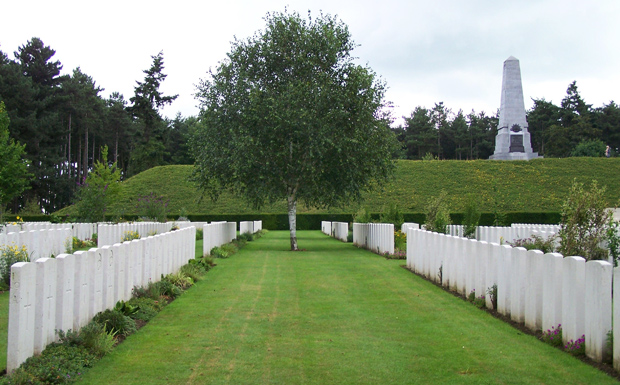
Polygon Wood is a large wood south of the village of Zonnebeke in west Flanders which was completely devastated in World War I.
The wood was cleared by Commonwealth troops at the end of October 1914, given up on May 3, 1915, taken again at the end of September 1917 by Australian troops, evacuated in the Battle of the Lys, and finally retaken by the 9th (Scottish) Division on September 28, 1918.
On the Butte itself is the Battle Memorial of the 5th Australian Division, who captured it on 26 September 1917.
The Polygon Wood cemetery is a front-line cemetery made between August 1917 and April 1918, and used again in September 1918.
After the Armistice, the Buttes New British Cemetery was established when a large number of graves were brought in from the battlefields of Zonnebeke.
There are now 2108 Commonwealth servicemen buried or commemorated in Buttes New British Cemetery; 1677 of the burials are unidentified.
* * *
Tyne Cot
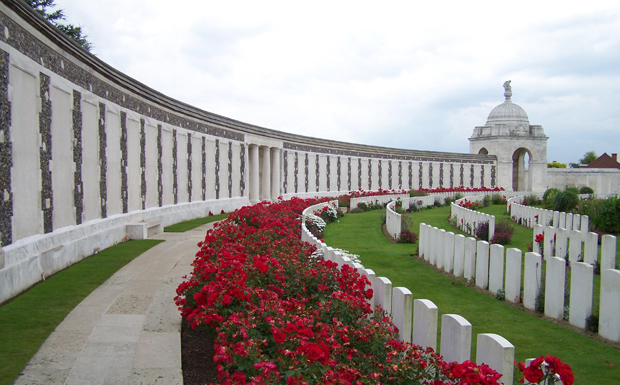
The Tyne Cot Memorial bears the names of almost 35,000 officers and men whose graves are not known. The memorial, designed by Sir Herbert Baker, was unveiled June 20, 1927.
The memorial forms the north-eastern boundary the cemetery which was established around a captured German pill-box used as an advanced dressing station.
The original battlefield cemetery of 343 graves was greatly enlarged after the Armistice when remains were brought in from the battlefields of Passchendaele and Langemarck, and from a few small burial grounds.
It is now the largest Commonwealth war cemetery in the world in terms of burials. There are11,956 Commonwealth servicemen interred; 8369 of these are unidentified.
[Photos: Liz Caffery]























